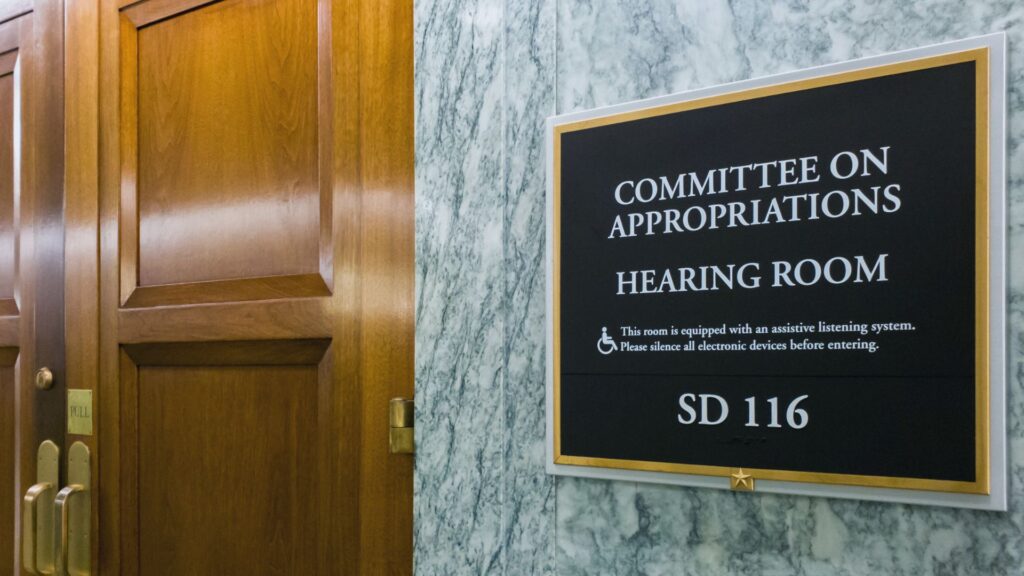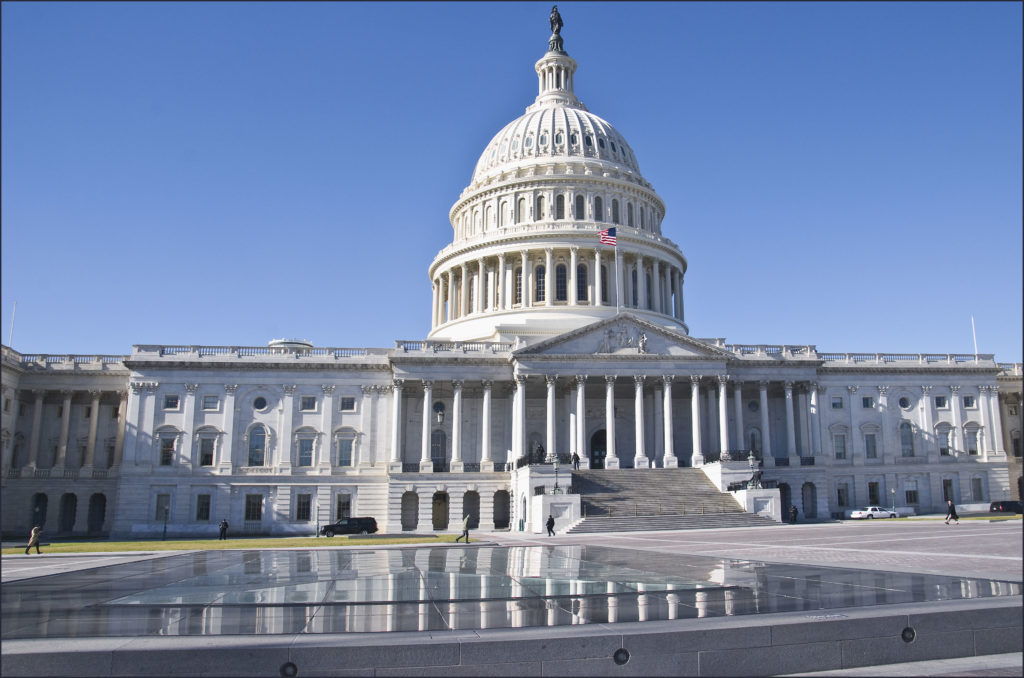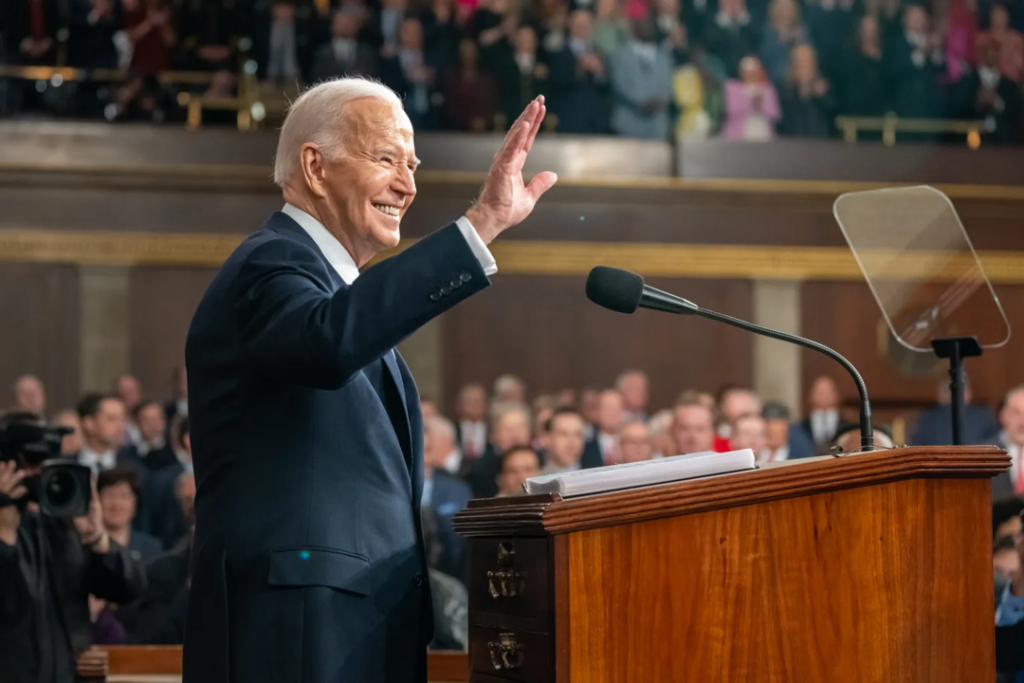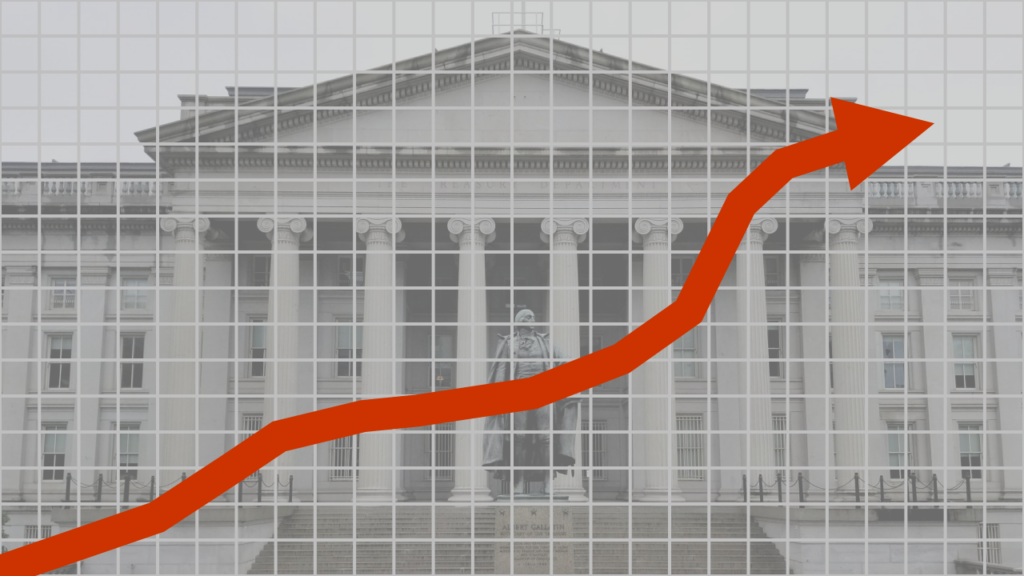Issue Brief
Federal Appropriations Process
A quick primer to help bond lawyers better understand the federal appropriations process and its connection to municipal bond offerings.

Disclaimer: The following is provided to further education and research and is not intended to provide legal advice or counsel as to any particular situation. The National Association of Bond Lawyers takes no responsibility for the completeness or accuracy of this material. You are encouraged to conduct independent research of original sources of authority. If you discover any errors or omissions, please direct those and any other comments to NABL.
Last Updated September 29, 2023
Each fiscal year, the federal government must complete a multistep process to authorize discretionary spending.[1] Congress sets high level spending numbers through a budget process. It then determines specific numbers and authorizes spending for federal discretionary programs through the appropriations process. Full appropriations of funding for the federal government consists of 12 separate bills divided by program area and subcommittee of jurisdiction. Congress rarely passes the bills into law separately, frequently opting to combine all 12 into a consolidated appropriations bill, colloquially known as an “omnibus” spending package, or through groups of bills known as “minibus” spending packages. Congress must appropriate all discretionary spending prior to the end of a current appropriations authorization or risk a lapse in appropriations and a potential federal government shutdown.
The Congressional Research Service (CRS) tracks the status of all 12 appropriations bills for each fiscal year.
List of Appropriations Areas and Subcommittees
- Agriculture, Rural Development, Food and Drug Administration (FDA) [2]
- Commerce, Justice, Science, and Related Agencies [3]
- Defense [4]
- Energy and Water Development and Related Agencies [5]
- Financial Services and General Government [6]
- Homeland Security [7]
- Interior, Environment, and Related Agencies [8]
- Labor, Health and Human Services, Education [9]
- Legislative Branch
- Military Construction, Veterans Affairs, and Related Agencies
- State, Foreign Operations, and Related Programs
- Transportation, Housing and Urban Development (T-HUD) [10]
Latest on Budget and Approps

FY2025 Appropriations
We are tracking the status of FY2025 appropriations, where things stand, and what it all means for bond lawyers.

FY2024 Appropriations
Review of the FY2024 federal appropriations process.

Biden Releases FY2025 Budget
The FY2025 appropriations season has begun. Here’s a quick summary of what’s inside and what we’re tracking.
The Process Further Explained
A series of laws, including the Congressional Budget Act of 1974, define the federal budget and appropriations processes. While these laws set specific timelines and deadlines for various steps of the processes, both the White House and Congress frequently miss key dates.
Presidential Budget Request (February)
The President typically submits a budget request to Congress in February, although sometimes later. The Office of Management and Budget (OMB) leads the creation of a comprehensive budget request on behalf of the Administration by compiling requests from individual agencies and detailing how allocations should be made to individual offices and programs. While the President’s budget outlines the Administration’s policy priorities and agency-determined needs, it does not bind Congress and mostly serves to open negotiations across both chambers of the Legislative Branch and the Executive Branch.
Budget Resolution (April)
Both the House and Senate agree to a concurrent budget resolution that sets topline spending and revenue numbers, and provides a general framework agreement between the chambers on how to proceed with appropriations. A budget resolution can also outline parameters for subsequent reconciliation legislation where Congress can expedite certain legislative changes that impact federal revenues and expenditures.
Senate Appropriations (May – September)
The House Committee on Appropriations and its subcommittees works to complete its 12 appropriations bills. Once committee markup is finalized, the entire House votes to pass appropriations bills.
House Appropriations (May – September)
The Senate Committee on Appropriations and its subcommittees works to complete its 12 appropriations bills. Once committee markup is finalized, the entire Senate votes to pass appropriations bills.
As mentioned, Congress frequently fails to meet these timelines. Negotiations on spending occasionally fall to the highest ranks of leadership who then work to achieve a final agreement that can pass a floor vote in their respective chambers. In general, Congress has three options leading up to the September 30 end of a fiscal year:
- Fully appropriate the federal government by passing all 12 spending bills, either together or separately. Congress would authorize spending for programs through the September 30 end of the next fiscal year. Congress rarely completes all its appropriations work prior to the start of a new fiscal year, and frequently employs a combination of the following alternatives.
- Pass a continuing resolution (CR), a short-term spending bill that for the most part maintains expenditure authorizations at the prior fiscal year’s levels. CRs generally operate as stopgap solutions to afford legislators more time to negotiate and conclude full appropriations work without the risk of a shutdown. CRs make it difficult for government programs to respond to inflationary pressures and policy priority changes, but they are generally preferable to a government shutdown that would occur in the absence of any spending legislation. The government can be funded via a CR for as little as several hours or indefinitely, including through an entire fiscal year. Some programs cannot maintain outgoing fiscal year spending numbers (e.g. the Census Bureau leading into a decennial census year or FEMA recovery efforts in the wake of a natural disaster), so Congress, at the OMB’s request, frequently includes a limited number of “anomalies” to plus-up spending for, and avoid harm to, programs needing substantial and immediate funding increases. Congress may also choose to pass appropriations for certain areas of the federal government and fund other areas through a limited CR.
- Risk a full or partial government shutdown. If Congress fails to complete any appropriations work prior to a lapse in spending authority, the federal government will begin a full shutdown that will impact all discretionary spending programs. If Congress passes a portion of its appropriations work (i.e., passes at least one of the 12 appropriations bills), the federal government will begin a partial federal government shutdown, which will only impact programs whose spending authority has lapsed.
Types of Federal Spending
For budget and accounting purposes, the federal government spends money in three ways. Below are three types of federal spending, examples of each, and if and how they are impacted by a shutdown.
| Type of Spending | Description | Examples | Impacts of a Shutdown |
|---|---|---|---|
| Mandatory (Direct) Expenditures | Certain programs are authorized to spend money in perpetuity outside of the appropriations process. Spending levels for these programs typically adjust formulaically due to factors outside of the appropriations cycle such as rates of inflation, unemployment, demographic changes, rates of program usage, or other statutory caps. Several mandatory spending programs continue to be subject to sequestration under the Budget Control Act (BCA) of 2011 and face ongoing threats of further sequestration due to provisions of the Pay As You Go (PAYGO) Act. | Interest paid to holders of federal debt; Medicare, Medicaid, and Children’s Health Insurance Program (CHIP);Supplemental Security Income (SSI);Certain agriculture programs; Federal pension and retirement programs; Certain refundable tax credits, including those for tax-advantaged bonds. [11] | These programs are typically not directly impacted by government shutdowns, however, staffing furloughs could cause processing and administrative interruptions. |
| Discretionary Expenditures | Federal funds authorized on an annual basis through the appropriations process fall under discretionary spending. Discretionary spending is further divided into two groups: defense and nondefense spending. | Most federal payroll, general agency, and programmatic spending; Military programs; Federal grants to private persons, states, local governments, tribes, etc. | Programs with lapsed appropriations will face immediate impacts during a government shutdown. The OMB and specific agencies typically announce operational changes to impacted programs close to the start of a shutdown. |
| Tax Expenditures | Programs that force the federal government to incur a revenue loss as a result of a tax exemption, deduction, or certain tax credits. These revenue losses are typically recognized as tax expenditures, but behave similarly to mandatory expenditures. | Tax exemption on qualified bonds; Standard deduction; Mortgage deduction; Charitable deduction; Exemption on certain retirement funds. | Programs should face little to no impact as a result of a government shutdown. Furloughed agency staff could cause delays in administrative processing. |
Select Considerations During a Shutdown
Most government shutdowns are quickly resolved and pose little risk to most municipal-bond-financed projects. The duration and extent of the shutdown, as well as the facts and circumstances of specific projects, issuers, and borrowers will help determine what, if any, impacts a government shutdown may pose. It is important to note that some of these considerations may not be relevant during a partial shutdown. For example, concerns about revenues for communities adjacent to military facilities are likely less relevant during a partial shutdown where the Defense appropriations bill has already been enacted into law.
Grant Recipients and Applicants
In most circumstances, grants already obligated to recipients prior to the start of the shutdown have been authorized under a prior fiscal year’s appropriations act and will not face a direct impact. However, a shutdown could delay or complicate the transmission and administration of these grants due to staff furloughs at impacted agencies. Customer support for grant recipients may also be limited due to staff furloughs.
Processing for most new grants offered by impacted agencies will greatly slow or cease during a shutdown due to staff furloughs. Applicants should expect delays.
Fee Funded Programs and Agencies
Grants and federal programs that are funded outside of the annual appropriations process— typically through user fees, dedicated excise taxes, or advance appropriations— will likely face little impact due to a shutdown. Issuers may pledge future revenues from these programs as a part of Grant Anticipation Revenue Vehicles (GARVEEs). Bond counsel should consult agency contingency plans for specific details that are subject to change. These programs include:
The Highway Trust Fund (HTF) is funded through federal gas tax collections that makes disbursements in the form of grants to state and local surface transportation programs. The Department of Transportation’s contingency plans for lapsed appropriations, dated August 3, 2023, (see page 7) notes that federal programs financed through the HTF, including the Federal Highway Administration (FHWA) will maintain normal operations during a shutdown.
The Mass Transit Account (MTA) is a fund underneath the HTF that receives a portion of all federal gas tax revenues and makes disbursements in the form of grants to state and local mass transit programs. The Department of Transportation’s contingency plans for lapsed appropriations, dated August 3, 2023, (see page 13) notes that the Federal Transit Administration (FTA) will maintain normal operations during a shutdown.
Airport Improvement Program (AIP) grants are funded through air travel related taxes that are normally self-sustaining. The Department of Transportation’s contingency plans for lapsed appropriations, dated August 3, 2023, (see page 4) notes, however, that the Federal Aviation Administration (FAA) will cease AIP activities in the event of a lapse in the FAA’s authorization that may occur concurrently with a lapse in appropriations.
Agency Responsiveness
All market participants should expect a delay in responsiveness from agencies subject to a government shutdown. The Internal Revenue Service (IRS), Securities and Exchange Commission (SEC), and most federal financial regulatory agencies are appropriated through Financial Services and General Government appropriations bills. The Municipal Securities Rulemaking Board (MSRB) is a nonprofit chartered by Congress and funded through market fees; as such, core functions of the MSRB should be minimally interrupted during a shutdown.
The White House maintains a running list of agency contingency plans in the event of a lapse in appropriations.
Projects with a Strong Federal Nexus
Communities and projects with a heavy economic nexus to, or reliance on, federal programs may face temporary stress depending on the extent and duration of a federal government shutdown. Certain issuers/borrowers may want to consult with bond or disclosure counsel about what, if any, disclosure obligations they may have in the event of a prolonged shutdown.
A non-exhaustive list of examples of how a shutdown may impact participants includes:
- Communities with a high concentration of federal employees furloughed due to the shutdown, including those near large military or research installations, and those in the Greater Washington, D.C. metropolitan area. Note: Historically, furloughed employees receive backpay at the conclusion of a shutdown, however, a prolonged shutdown may cause a temporary period of stress.
- “Gateway communities” and projects near National Park facilities that rely on tourism-related fees and revenues from visitors such as sales and lodging taxes, passenger facility charges (PFCs), or tolls may face revenue declines if facilities are closed during a prolonged shutdown.
- Projects carried out in conjunction with federal agencies, such as the U.S. Army Corps of Engineers (USACE), may be impacted by operational changes during a shutdown. Projects awaiting federal review approvals may also encounter delays.
Issuers Claiming Tax Credits or Refunds
While tax credits and refunds should not be directly impacted by a shutdown, administrative changes at agencies could interrupt processing and cause delays. Historically, issuers claiming refund payments for certain direct pay bonds, such as Build America Bonds (BABs), have experienced delays due to furloughs of agency employees tasked with processing the forms. It is unclear how a new mandate to file Form 8038-CP electronically will impact processing during future shutdowns.
SLGS
In general, a lapse in appropriations tends to have minimal impact on the sale of State and Local Government Series (SLGS) securities. Unlike periods of extraordinary measures, the Treasury Department typically does not suspend the sales of SLGS during a lapse in appropriations (see “When has Treasury suspended the sale of SLGS in the past?” via Treasury Direct’s SLGS FAQs). The Bureau of Fiscal Service (BFS), which administers the sale of new SLGS, indicates in its contingency plans (dated September 28, 2023) that a number of core functions will remain uninterrupted during a lapse in appropriations. NABL will continue to inform members should federal operations facilitating the sale of SLGS face changes or interruptions.
Related
Footnotes
[1] The federal government runs on an October 1 to September 30 fiscal year. Each fiscal year is named based on the year in which it ends. For example, the fiscal year from October 1, 2022, through September 30, 2023, is labeled FY 2023.
[2] The Agriculture, Rural Development, Food and Drug Administration appropriations bill authorizes funding for numerous rural development programs and grants offered by the Department of Agriculture and its subagencies.
[3] The Commerce, Science, and Justice appropriations bill authorizes funding for Economic Development Agency (EDA) grants and several law enforcement program grants offered through the Department of Justice and its subagencies.
[4] The Defense appropriations bill authorizes funding for the Departments of Defense and branches of the U.S. military excluding the U.S. Coast Guard.
[5] The Energy and Water Development appropriations bill authorizes funding for civilian U.S. Army Corps of Engineers projects.
[6] The Financial Services and General Government appropriations bill authorizes funding for most financial regulators, including the Internal Revenue Service (IRS) and Securities and Exchange Commission (SEC). As a fee-funded nonprofit chartered by Congress, the Municipal Securities Rulemaking Board is not directly subject to the appropriations process.
[7] The Homeland Security appropriations bill authorizes funding for the Departments of Homeland Security, its subagencies, and their programs. This bill notably appropriates the U.S. Coast Guard.
[8] The Interior and Environment appropriations bill authorizes funding for the National Park Service (NPS), numerous tribal finance programs, and grant programs offered through the Environmental Protection Agency (EPA), the Department of the Interior and its subagencies.
[9] The Labor, Health and Human Services, Education appropriations bill authorizes funding for grant programs offered through the Department of Health and Human Services (HHS), Department of Education, and the Department of Labor (DOL).
[10] The Transportation, Housing, and Urban Development (T-HUD) appropriations bill authorizes funding for numerous transportation, housing, and infrastructure grant programs, including those offered through the Department of Housing and Urban Development (HUD), the Department of Transportation (DOT), and their respective subagencies.
[11] These credits can include refund payments for previously issued Build America Bonds (BABs) and other tax credit bonds. The Earned Income Tax Credit (EITC) and the Child Tax Credit (CTC) are other tax credits that often fall under the category of mandatory spending.
